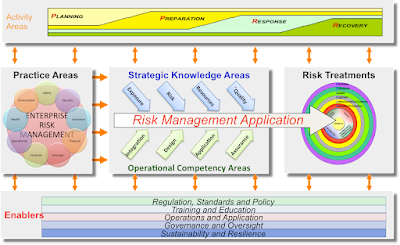Let's say that we wanted to change peoples minds about something. Say for example, you wanted to convince the travelling public that it's safe to fly again, after a major terrorist attack involving aircraft hijacking. How long would it take? A long time. The evidence seems clear. Even with trillions of dollars in resources, it apparently takes three years or perhaps even five years to change peoples perception of the risk. At least, that is what US road fatalities data suggests.
In the September 11 terrorist attacks, 2,974 people tragically lost their lives. The public was justifiably horrified, and several trillion dollars was allocated to counter-terrorism measures. In the same year, however, a staggering 42,196 people lost their lives in motor-vehicle fatalities with scarcely a comment in the media. Fear of hijacking, understandable though it may be, contributed to a drop of more than 30 percent in US domestic air travel in 2002; people chose to drive rather than fly. Meanwhile, US motor-vehicle fatalities (a number that was previously steady or falling) increased by 809 people that same year; from 42,196 fatalities in 2001 to 43,005 in 2002. [3]
It can often be difficult to demonstrate a clear cause and effect between risks and outcomes, and this situation is no different. The above statistics however were not entirely unexpected. In December 2001, David Myers, professor of psychology at Hope College, postulated a further eight hundred road deaths due to people driving rather than flying in 2002, adding that “in just one year the terrorists may indirectly kill three times more people on our highways than died on those four fated planes.” [2] Further indication of the lasting effect of this risk perception is that the average annual road fatalities in the five years after 2001 was 1,140 higher than the average five years before 2001 (41,848 versus 42,989). Yes, that's a total of 5,702 additional people were killed on the road in the five years following the September 11 attacks. In fact, it wasn’t until 2007, that road fatalities dropped below their 2001 levels.
It is of course, much more than the scope of this article to confirm that the drop in road fatalities was linked to rebuilding confidence in aviation. Change in perceptions about seatbelts and drink driving as well as improvements in motor vehicles have all played their part. It's striking however to look at the data graphically and it's clear that something changed significantly around 2008. Perhaps it was just the effect of the global financial crisis (GFC) - and that did cross my mind. So I had a look at the statistics regarding how many passengers actually flew each year in the United States. It turns out that the GFC did have an impact, but not enough to completely explain the road fatalities. From a low in 2002 of 670,604,493, passengers increased by roughly 5 percent per annum until 2007 but it took three years to return to the pre-2001 levels. [4] From 2007 onwards, it does seem likely that the GFC had some impact on both road fatalities and aviation passenger levels, but even so, it seems likely that it took most Americans up to five years to believe that flying was safer than driving - or at least, safe enough to take it up en masse.
Is this really a surprise? Anybody who has tried to convince someone that a belief held doesn’t match the facts, knows perception doesn't always align with facts. On the contrary, as John Kenneth Galbraith put it so eloquently, "Faced with the choice between changing one's mind and proving that there is no need to do so, almost everyone gets busy on the proof."
It's not only difficult for us to change other peoples minds but it's hard for them to change their own mind. Equally significantly, it's very difficult for us as risk managers to truly absorb new information in a way that changes our behaviours. In his latest book Changing Minds: The Art And Science of Changing Our Own And Other People's Minds (Leadership for the Common Good), Howard Gardner, a cognitive scientist, describes this phenomenon succinctly:
"People underestimate how difficult it is to change minds. ... When you’re little, your mind changes pretty readily, even if nobody pushes it. We are natural mind-changing entities until we are 10 or so. But as we get older and have acquired more formal and informal knowledge, then it’s very, very hard to change our minds. ... I’m not stating that on small matters it’s difficult to change people’s minds. A coffee break at 3:00 rather than 1:00—that’s trivial. But on fundamental ideas on how the world works, about what your enterprise is about, about what your life goals are, about what it takes to survive—it’s on these topics that it’s very difficult to change people’s minds. Most people, by the time they’re adults, not only have become used to a certain way of thinking, but in a sense it’s work for them [to change] because their neural pathways become set."So, is it official that it takes five years to change peoples perception of a risk? Not by a long shot. But it's an interesting question to ask.
==========================
[1] Schneier, B (2007), The Psychology of Risk management, 28 February 2007, available at http://www.schneier.com/essay-155.html, viewed 20 August, 2011
[2] Myers, David (2001), “Do We Fear the Right Things?”, Observer (Journal of the American Psychological Society), December, 2001
[3] Motor vehicle fatality statistics calculated by U.S. Department of Transportation, Research and Innovative Technology Administration (RITA), Bureau of Transportation Statistics (BTS), ‘Table 2-17: Motor Vehicle Safety Data’.Viewed 20 October 2012.
[4] Aviation statistics calculated by U.S. Department of Transportation, Research and Innovative Technology Administration (RITA), Bureau of Transportation Statistics (BTS), Passengers
All Carriers - All Airports. Viewed 21 October 2012.













